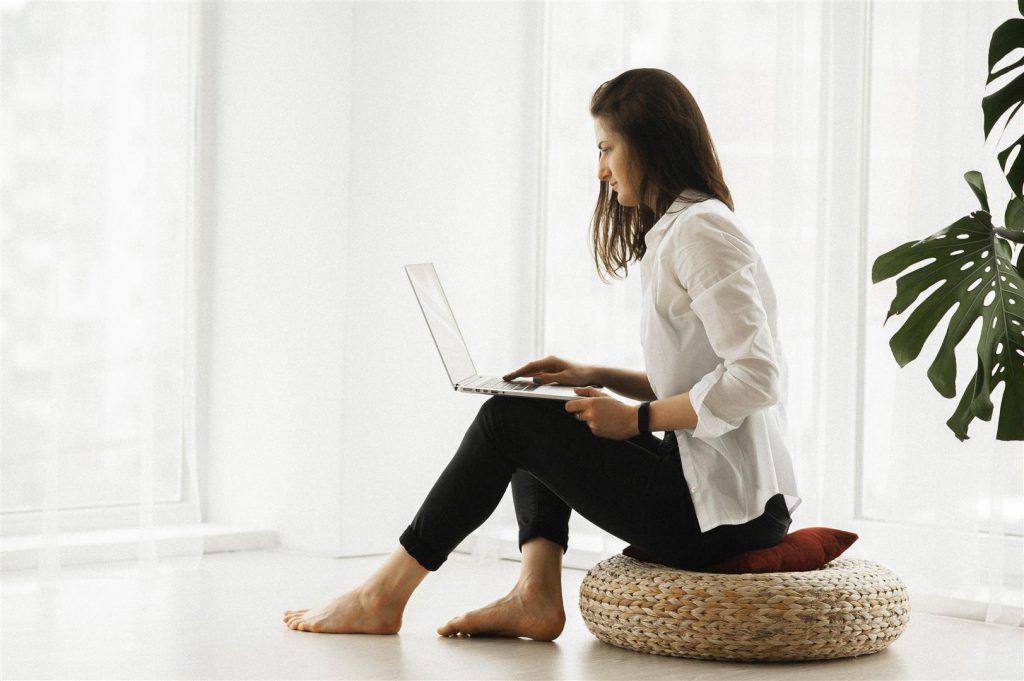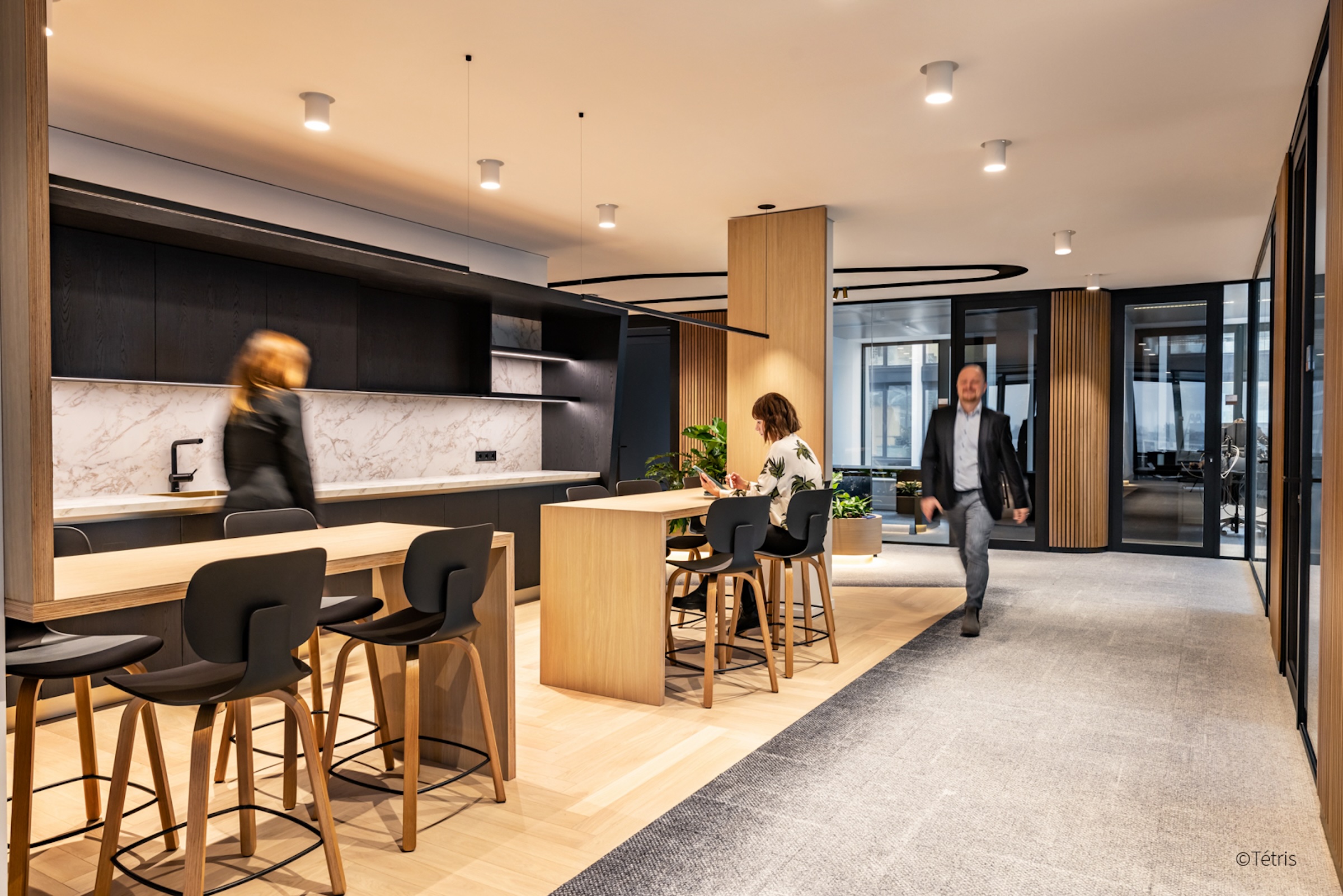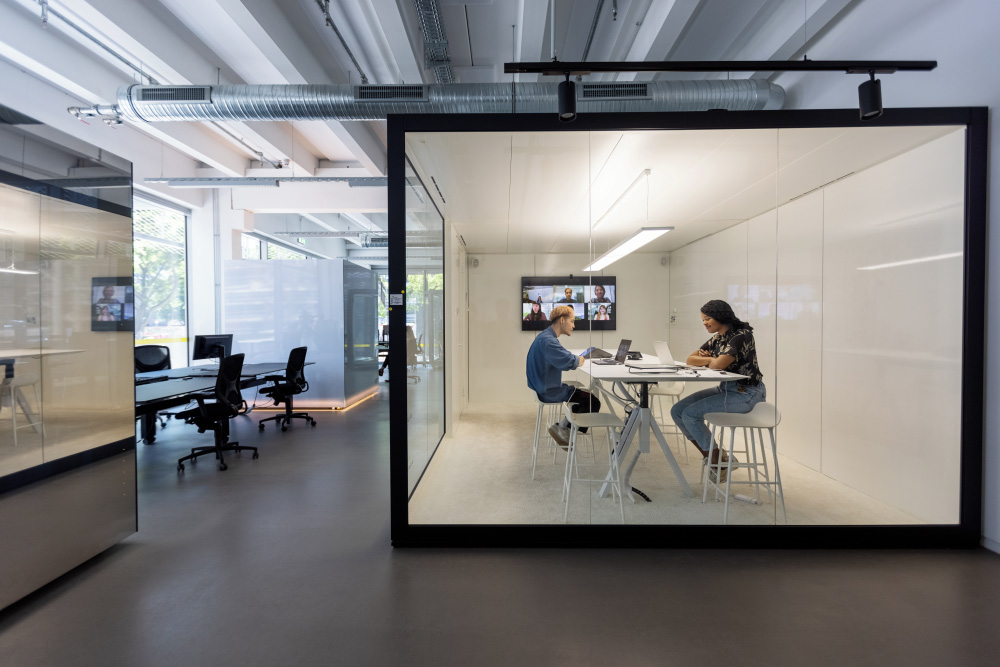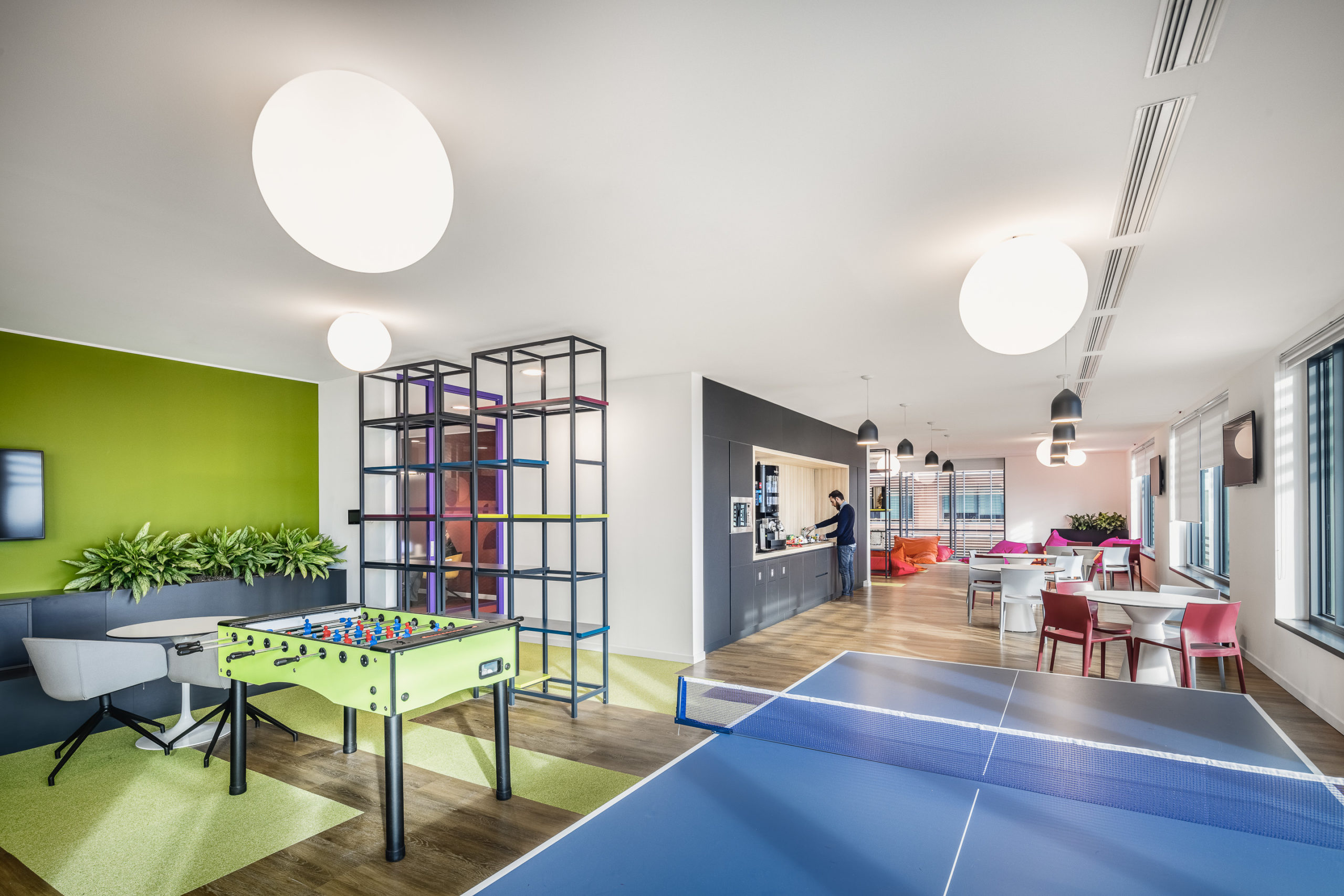The workplace is no longer simply the office. Last year’s shift towards remote work is ushering in the concept of the hybrid workplace, which encompasses all the spaces in which employees can work – homes, cafes and coworking spaces, and multiple offices designed for different purposes.
Nuno Fernandes, Design Director EMEA at Tétris, and Lee Daniels, Global Product Manager Workplace & Occupancy Strategy & EMEA Experience Lead at JLL, explain why hybrid working could define the offices of the future.
We’re hearing a lot of companies say things won’t go back to the way they were before, so how could the hybrid work model better suit their space needs?
Nuno Fernandes: Employees work well from home, yet also miss the interaction and socialising of the office. Meanwhile businesses are looking for new ways to maintain company culture. A hybrid work model offers the possibility for companies of any size and industry to reconfigure their workspace to meet the unique needs of their business and offer choice and flexibility to employees.
Lee Daniels: With a proportion of employees working from home, companies can downsize and invest in smaller, high-design “Club”-style headquarters to wow clients and showcase company culture, and/or multiple “hub” offices that are located closer to employees’ homes, reducing their commute. Coworking or “on-demand” workspace provides additional flexibility which many of today’s employees value.
Wellness has become a top priority for businesses – how does the hybrid work model support this growing area?
Nuno Fernandes: Companies have the opportunity to analyse the type of workspaces they require, based on the percentage of people they have at home or in offices, and, importantly, what their employees need to thrive, which has direct impacts on wellbeing.
The design and ambiance of workplaces has a huge impact on how people manage their workloads, interact with colleagues and deal with problems. Many people don’t find crowded, noisy workplaces to be particularly appealing or motivating. If companies want to get the best from their employees, it’s about building spaces that really cater for their needs rather than expecting everyone to make do with a one-size-fits-all model.
People often need different spaces for different tasks whether it’s quieter areas for concentrating or social spaces for brainstorming ideas. Hybrid models allow people to choose spaces to suit their needs to reduce stress levels and help them feel comfortable wherever they’re working from.
Design will remain a key factor to create inviting and comfortable spaces that help people use spaces effectively – what are the big differentiators within the hybrid work model?
Lee Daniels: The “Club” will be distinguished by premium amenities that nurture a sense of community – like amphitheatres, event space, relaxation zones, while hub spaces facilitate desk-based work.
Nuno Fernandes: Larger companies are more likely to invest in high-spec headquarters with collaborative spaces that invite employees to socialise, learn and absorb company culture. This is complemented by satellite offices that support private or group work with a mixture of individual work desks and comfortable breakout areas with plenty of greenery and natural light.
What challenges are there in terms of designing across a hybrid model?
Nuno Fernandes: There is a challenge in how much emphasis there will be on the “Club” headquarters versus the hub offices. But cost-wise, it’s not feasible to have, say, three offices all with high-spec finishes. Leasing coworking space – or other ready-to-go workspace – to serve as the hub offices is an alternate solution for providing convenient locations to work.
Remote working is here to stay, so how can companies create a positive work environment for staff at home?
Nuno Fernandes: Companies can ensure people have the elements they need to work properly, including an ergonomic chair, the right lighting and a good desk. Some employers are offering money towards home office setups. It’s also important that companies recognise some employees’ home-working scenarios may not be as productive or comfortable and in these cases, an alternate workspace should be readily available.
Lee Daniels: In home or other settings, technology will be the main enabler for seamless online working whether people are collaborating on projects through cloud-based platforms or communicating via chat or high-end video conferencing. Advancing technology in offices will also help remote staff interact with colleagues regardless of where they’re based. It’s going to have a huge impact on helping companies to attract and retain the talent they need.

Learn more about our approach to hybrid workspace design and how it can inspire your business in our Designing Tomorrow’s Workplace guide.



